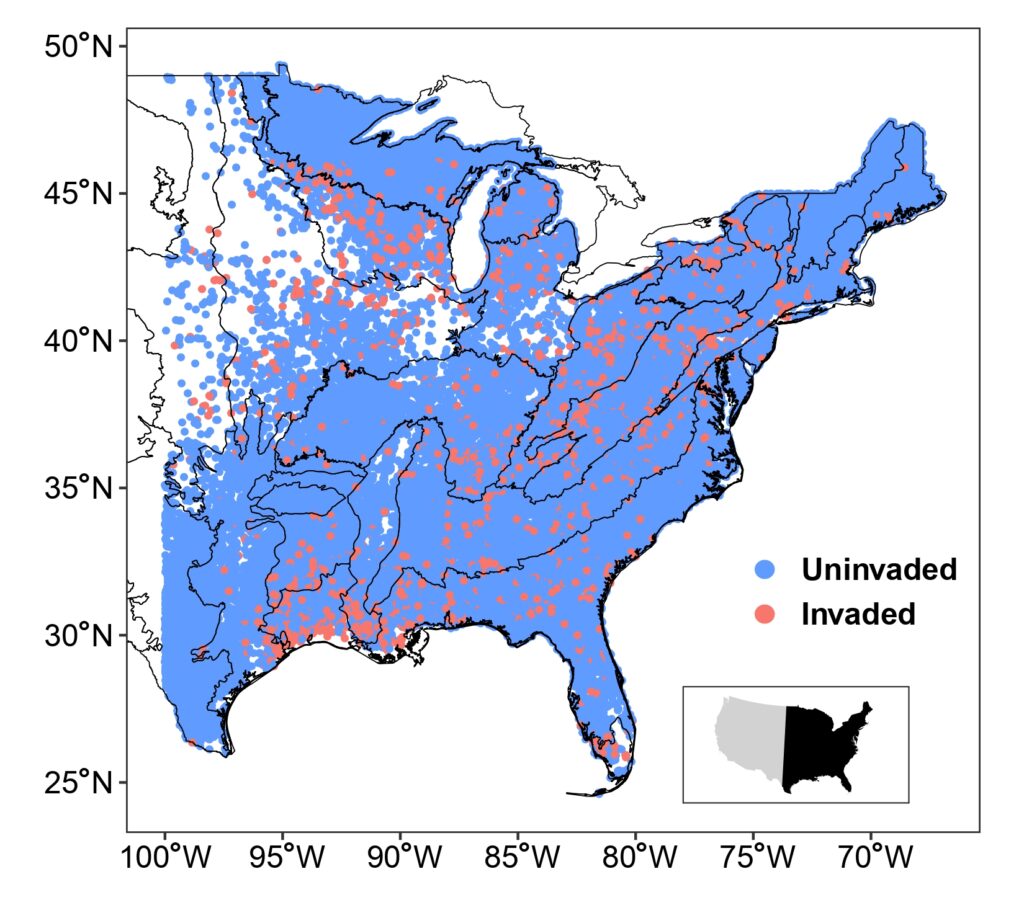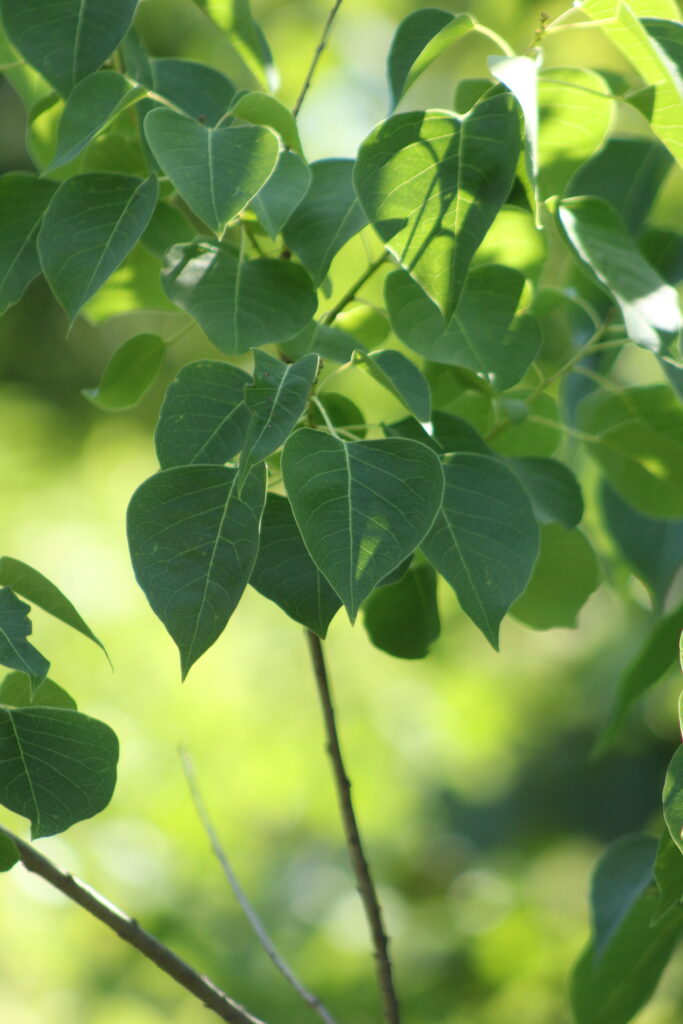By Lourdes Mederos, UF/IFAS Communications
A new University of Florida study tracking more than 5 million trees over nearly three decades reveals a troubling trend for the future of forests in the United States – the loss of native trees.
According to findings, published in the journal Proceedings of the National Academy of Sciences (PNAS), researchers reveal how non-native tree species are gaining ground, gradually squeezing out rare native trees in forests across the eastern United States.

“Non-native tree invasions were associated with the loss of locally rare native tree species. This loss of native species will trigger a variety of subsequent losses in ecosystems,” said Yunpeng Liu, a post-doctoral researcher affiliated with the UF/IFAS Invasion Science Research Institute and lead author of the research. “Because native trees provide homes and food for many local wildlife, including insects, birds and mammals, it could impact the biodiversity and survival of dependent wildlife.”
Meanwhile, there is some good news for Mother Earth that has taken root, for now. The overall greenery in our forests looks healthy and is increasing in some ways. Still, researchers are concerned about what’s going on beneath the canopy, seeing the shift implications for the future of forests.
“These results highlight the risk of native tree species loss due to invasion, although other aspects of ecosystem, such as yield, may be less affected,” he said.
For the study, researchers analyzed records from the U.S. Department of Agriculture Forest Inventory and Analysis program, collected between 1995 and 2023. These data provide some of the most comprehensive views to date of how biological invasions are reshaping forest ecosystems on a continental scale. More importantly, they analyzed how the slow and steady decline of native tree diversity in areas invaded by non-native species may impact other wildlife species.
Researchers found that over time, tree plots with non-native species consistently saw a decline in native tree species. Meanwhile, non-native trees increased in both species’ variety, known as species richness, and the total amount of living plant material in a forest, including trees, shrubs and other vegetation, known as forest biomass.

(Anelise Bullard, University of Florida)
While the overall biomass of native trees also increased– which researchers attribute to such environmental trends as reforestation and elevated carbon dioxide levels – the loss of native species points to an ecological shift driven by species competition and displacement.
“Native species that became extinct after non-native species moved in were often rare and similar to the newcomers,” said Liu. “This similarity means they competed for the same resources and could disrupt pollinators or seed dispersers.”
Scientists also learned that rare native trees were especially vulnerable because small populations are more likely to die, and they struggle to compete.
“The continued loss of rare species could eventually make ecosystems more vulnerable if dominant species decline or disappear without similar rare species to replace them,” said Liu. “Additionally, losing rare species is likely to alter community structure and biological interactions, which may reduce ecosystems’ ability to resist global changes and increasing human activity.”
Researchers also noted that non-native invasions were also more common in plots with lower tree density and biomass, possibly due to recent disturbances that left gaps for new species to establish.
“While the biomass of both native and non-native trees has increased over time, we found that non-native species account for a small portion of this increase by comparison but significant enough to create a gradual erosion of native tree diversity,” he said. “This subtle shift in native versus non-native tree species could affect forest health and resilience in ways that are not immediately visible.”
This piece was originally published at https://blogs.ifas.ufl.edu/news/2025/04/23/uf-ifas-study-non-native-trees-quietly-invading-our-u-s-forests-causing-decline-in-native-trees/. Banner photo: Forest and wetlands in Paynes Prairie Preserve State Park, Gainesville. (Image courtesy of Yunpeng Liu, UF/IFAS Invasion Science Research Institute).
Sign up for The Invading Sea newsletter by visiting here. To support The Invading Sea, click here to make a donation. If you are interested in submitting an opinion piece to The Invading Sea, email Editor Nathan Crabbe at nc*****@*au.edu.



